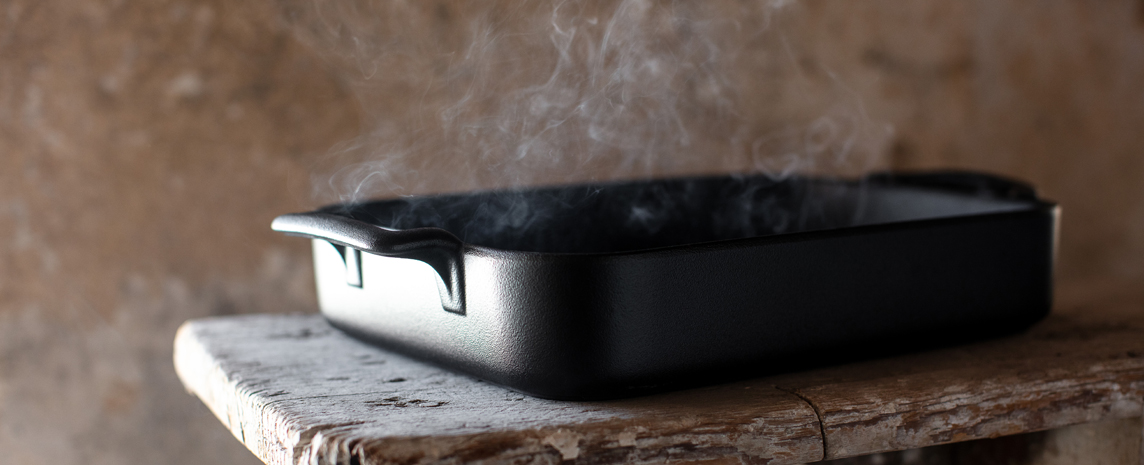- FREE DELIVERY FOR ORDERS $150+
- Pays : US
- Need Help?
- +1 678 456 8671
No products
Prices are tax included

Choose the right oven
Simplicity is the magic word! Avoid ovens with pre-programmed settings, with icon representing chickens, pies, or other dishes. One uses those rarely, if at all!
The most important thing is to be able to control high and low temperatures.
Your oven should have 3 essential functions:
- Convection
- Static
- Broiler
Choose an oven with a pyrolytic self-cleaning system, it will make your life easier! If possible, place your oven at eye level so as to avoid bending down. Do not put an induction plate on top of an oven, as it will release heat that will hinder the electronics of your plate. Think about the arrangement of your kitchen in terms of functionality, choosing openings that are convenient in terms of height and width. Finally, be particularly careful when opening doors, as this is the source of 80% of errors.
Use your oven correctly
Reading the instructions is already a big step! Once done, here are a few rules you should respect:
DON’T FORGET TO PREHEAT:
We recommend you to preheat your oven 20°C/70°F higher than the desired temperature, as when you open the door to put in your dish, the temperature drops. If you bake at 350°F or higher, you should place your baking dish inside of the oven before reaching this temperature to avoid a thermal shock. Don’t forget to preheat the baking sheet if you are going to use it to cook anything like pizzas or pies for example. This will give you a perfectly crisp crust.
PLACE DISHES AT THE RIGHT HEIGHT
- BOTTOM OF THE OVEN: Place on the lower level anything that must rise, such as soufflés, cakes, choux pastry, quiches, breads, etc.
- THE MIDDLE OF THE OVEN: Here, you place anything that must cook for a long time and does not rise, such as meats, vegetables, terrines, pates or creams in a bain-marie.
- TOP OF THE OVEN/BROILER: Place at the top of the oven/in the broiler anything that must caramelize or brown.
- If your dish must both cook and caramelize (such as a gratin), it is preferable to cook it in the middle of the oven for 30-45 minutes before moving it to the broiler so that it browns.
USE THE CORRECT SETTING: Convection, static, broiler?
- The oven is most often in the static mode. Remember that convection can dry out your food.
- Convection is perfect for meringues, for example, and other dishes where rapid evaporation is desired.
- The broiler is used at the end of a baking process to bring color to your dishes.
USE THE RIGHT TEMPERATURE
- - 70°C-80°C /160°F-175°F: LOW TEMPERATURE
Why cook at low temperatures?
The more a meat or fish is cooked on high heat, the tougher it becomes. Whence the culinary advantage of low temperatures: the proteins do not dry out or shrink. Stews, ragouts, and other dishes in a sauce are also better when cooked at low temperatures, because this low-heat cooking slowly concentrates the flavours. In order to succeed at these types of dishes, you must follow two steps:
- Brown the meat in a frying pan with a bit of fat or oil.
- Place in the middle of the oven at 80°C/175°F on the static mode and let it stew!
For meat, cooking time at low temperatures depends on how much you browned it, the kind of meat, and its thickness.
The dish is cooked when the inside of the meat has reached a particular temperature:
- A beef or lamb filet and roast : 55°C/135°F
- Veal : 60°C/140°F
- Chicken breast: 70°C/160°F
Ideally, you should invest in a cooking thermometer, which will reassure you that your dishes are done. Another advantage of low-heat cooking: if it isn’t yet time to come to the table and your dish is done, lower the oven to 60°C/140°F. Your dish can stay 1 hour in the oven without changing – very practical!
You may also heat the plates to 70°C/160°F so that the juices do not congeal during plating.
- 180°C/355°F : MEDIUM HEAT :
This is the temperature most often used to bake roasts, pates, fish, soufflés, quiches, pies, cakes…
- 200-220°C/395-430°F : VERY HOT OVEN :
This temperature is used to bake madeleines, biscuits, or blind bake a pie crust.
Use dishes that make sense for each recipe
All types of dishes can go in the oven: porcelain, glass, metal, even a cast-iron cocotte. Mainly, one must adapt the size of the dish to the ingredients. Porcelain is the most ideal material for oven cooking.

